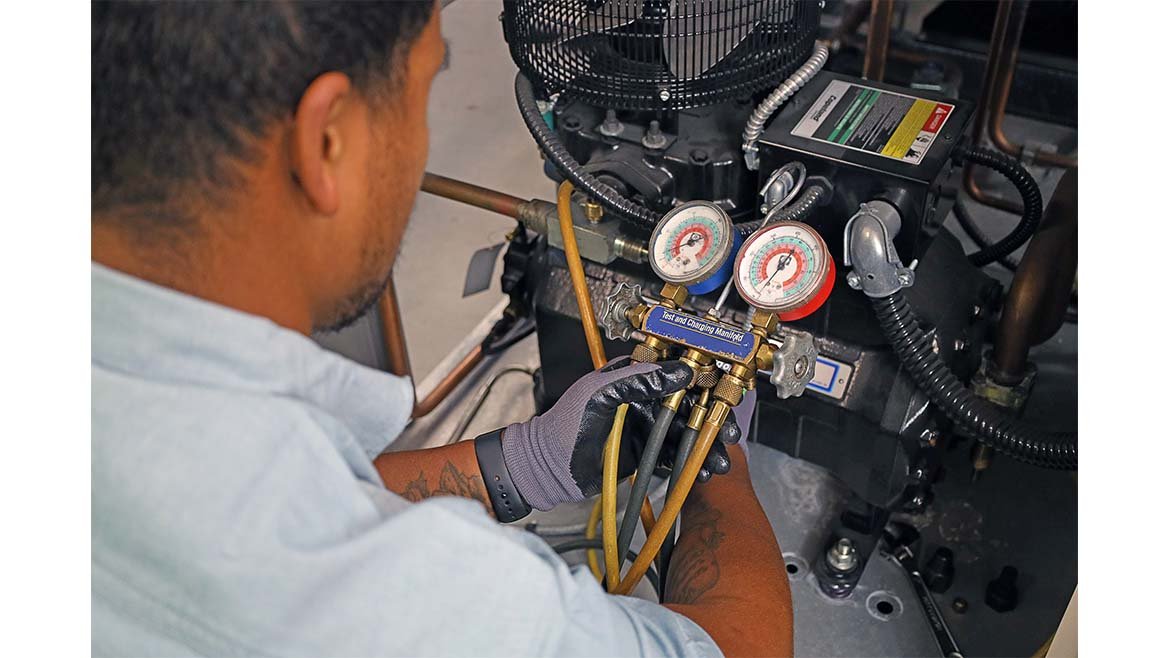Ensuring the proper functioning of heating, ventilation, and air conditioning (HVAC) systems often requires attention to refrigerants. These substances are crucial for cooling and heating, enabling heat transfer within the system. Over time, refrigerant-related issues may arise due to leaks, outdated systems, or environmental regulations. Handling refrigerant replacements and upgrades demands precision and adherence to specific processes to ensure optimal performance and compliance with legal and environmental standards. We will explore how HVAC contractors in Hyde Park approach these tasks, focusing on their steps to ensure systems operate effectively and efficiently.
Assessing the System and Identifying Refrigerant Needs
Before performing a refrigerant replacement or upgrade, HVAC contractors conduct a detailed system assessment. This involves checking for leaks, underperformance, or signs that the refrigerant is no longer efficient or compatible with current standards. Contractors often begin by inspecting the refrigerant levels and pressure using gauges and diagnostic tools. If discrepancies are found, it may indicate a leak or an improper charge.
Contractors also evaluate the type of refrigerant being used. Many older HVAC systems rely on substances like R-22, which have been phased out due to their harmful effects on the ozone layer. Modern regulations require the use of more environmentally friendly refrigerants such as R-410A. In such cases, contractors assess whether the existing system can support a newer refrigerant or if a complete upgrade is necessary. This stage sets the foundation for a safe and efficient replacement or upgrade, ensuring the system is ready for further action.
Recovering and Safely Handling Old Refrigerants
Once the need for replacement or upgrading is determined, the next critical step is recovering the old refrigerant. HVAC contractors are trained to follow strict protocols for refrigerant recovery to prevent harmful emissions and comply with environmental regulations. They extract the old refrigerant using recovery machines and transfer it to certified storage tanks.
Proper handling is crucial because refrigerants can harm humans and the environment. Contractors ensure they wear appropriate personal protective equipment (PPE) and use sealed systems to avoid leaks during recovery. The recovered refrigerant is then either recycled or disposed of following legal requirements. Recycling involves filtering and cleaning the refrigerant to be reused, while disposal is performed under strict environmental guidelines. This careful approach minimizes the ecological impact of refrigerants and ensures the safety of those performing the work.
Preparing the System for the New Refrigerant
Preparing the HVAC system for a new refrigerant involves cleaning and sometimes retrofitting components. Contractors flush the system to remove any residue of the old refrigerant and associated oils. This is essential because mixing incompatible refrigerants can damage the system and compromise performance. They often inspect and replace critical parts such as expansion valves, filters, and seals to ensure compatibility with the new refrigerant.
Retrofitting may be necessary for older systems. This could involve updating components like compressors or evaporator coils to handle modern refrigerants effectively. Contractors carefully evaluate the costs and benefits of retrofitting versus installing a new system altogether. Regardless of the approach, the goal is to optimize system performance while ensuring compliance with environmental standards. This stage requires meticulous attention to detail, laying the groundwork for the refrigerant to function as intended.
Charging the System with the New Refrigerant
Charging the system with a new refrigerant is a precise process that requires adherence to specific manufacturer guidelines and industry standards. HVAC contractors calculate the refrigerant needed based on the system’s specifications. Using accurate tools such as digital gauges and weighing scales, they introduce the refrigerant into the system at the appropriate pressure levels.
This step demands careful monitoring to ensure the system achieves the correct balance of refrigerant without overcharging or undercharging. An overcharged system can lead to inefficiencies and potential damage, while an undercharged system may need help to perform adequately. Contractors also test the system for leaks during this process, using tools like electronic leak detectors to identify and address any issues. Once the refrigerant is successfully charged, they evaluate the overall system performance to confirm that it operates as expected.
Ensuring Compliance with Environmental and Legal Standards
Compliance with environmental and legal standards is one of the most important aspects of refrigerant replacement and upgrades. Strict regulations under international agreements like the Montreal Protocol and national laws such as the U.S. Clean Air Act govern refrigerants. These regulations aim to minimize the environmental impact of refrigerants by phasing out harmful substances and promoting eco-friendly alternatives.
HVAC contractors are well-versed in these regulations and ensure all work follows the guidelines. This includes proper handling and disposal of old refrigerants, using approved substitutes, and maintaining detailed records of the work performed. Contractors also educate clients about the environmental implications of refrigerants, helping them make informed decisions. By prioritizing compliance, contractors contribute to sustainability and the responsible use of refrigerants.
Refrigerant replacements and upgrades are crucial for maintaining efficient and environmentally friendly HVAC systems. Contractors handle these tasks precisely, from assessing the system and recovering old refrigerants to charging the system and ensuring compliance with regulations. Their approach ensures that systems operate effectively while minimizing environmental impact. We have explored contractors' methods and steps to achieve these goals, highlighting the importance of careful planning and execution. By following these practices, HVAC contractors help homeowners and businesses maintain reliable and sustainable systems for years.
 Online Clock
Online Clock